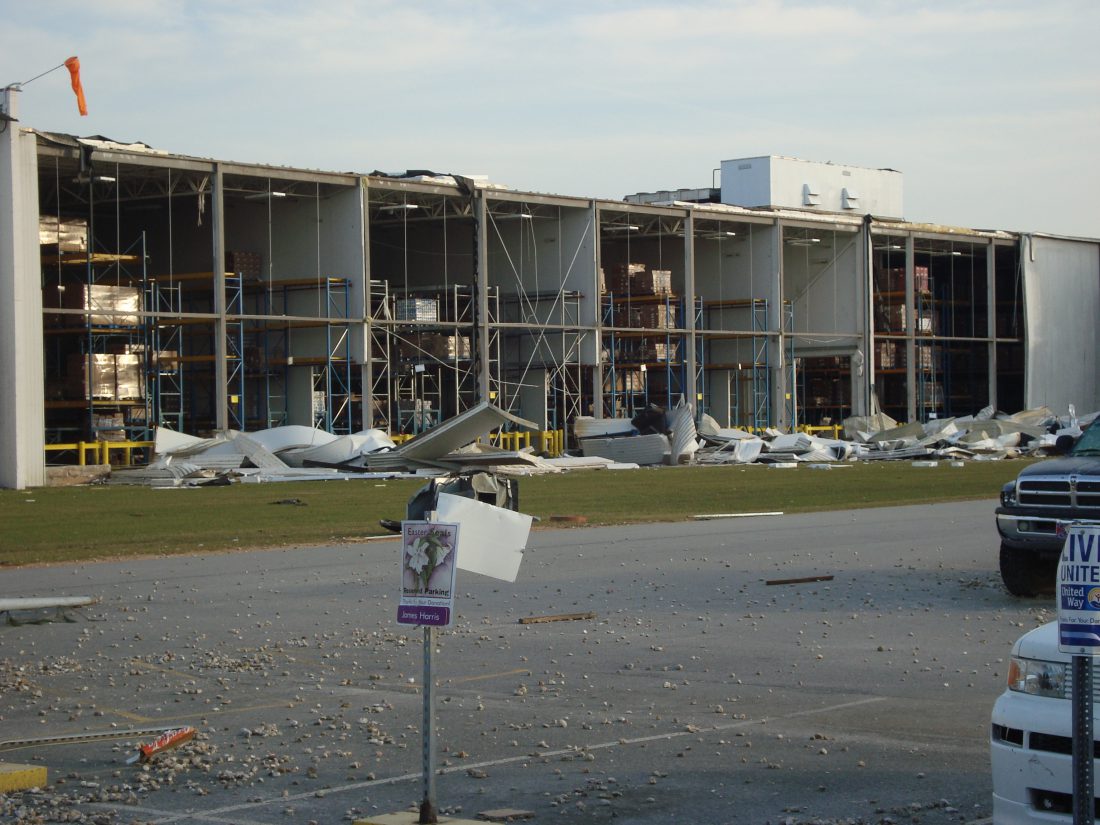Natural disasters can wreak havoc on a food processing facility, not only causing physical damage to the building, but also resulting in a huge economic loss in product and production downtime. Planning for a natural disaster has to be strategic and should include partners from your local emergency response teams, vendors and designated employees.
Your disaster response plan should begin with these three activities:
1. Plan — A generic emergency response plan is not sufficient. Your plan must be specific to your location and your product. Begin by looking at what natural disasters are likely to occur in your region of the country, whether it’s a tornado, hurricane, fire or flood. Then, look at the possible implications of that disaster on your physical building, but also on your product and supply chain. Chart out what areas of your plant are impacted by a power outage, what processes may shut down due to the loss of rooftop equipment, and what key areas should be protected from water damage.
The purpose of an emergency response plan is to protect your assets, especially your employees. It’s important to appoint a response team who understands all of your plant’s systems and how those systems can be safely shut down in the event of a disaster. In case of a fire, how do you secure your ammonia or refrigeration systems to prevent a release and who is responsible for safely engaging the system shutdown? What’s your plan to evacuate the building immediately and efficiently, and how will you account for all employees? Industry groups and government regulatory agencies are a great resource and provide requirements and recommendations your plant can follow in developing a plan.
2. Partner — Based on the types of natural disasters that may occur in your region, identify local partners who can quickly respond to your specific needs. If you lose power, don’t solely rely on the local power company to restore it quickly. They must serve the needs of the entire community. Have your own plan in place with partners and your local utility. Reach out to local partners and vendors to be part of your response team. Know where you can obtain industrial generators and how they will be transported to your facility. Identify equipment suppliers who can quickly replace lost rooftop equipment necessary for production and have construction partners who can readily obtain materials and repair any building damage. Choose partners who have the knowledge base, expertise, and network of suppliers who can respond quickly with necessary parts and equipment.
3. Prioritize — Following a natural disaster, you’ll need to prioritize which areas of your facility need attention first. Do freezers need to be restored first to avoid loss of product? Poultry plants may rely on automatic feeding systems that need to be restored to protect the supply chain. Don’t discount the need to get utilities restored quickly to heat water for sanitation.
One important step that many plants neglect is to keep copies of your emergency plan and contact information for all partners off-site. Chances are, you won’t be able to return to the building to access this information, so ensure you have response information stored off-site and in cell phones.



